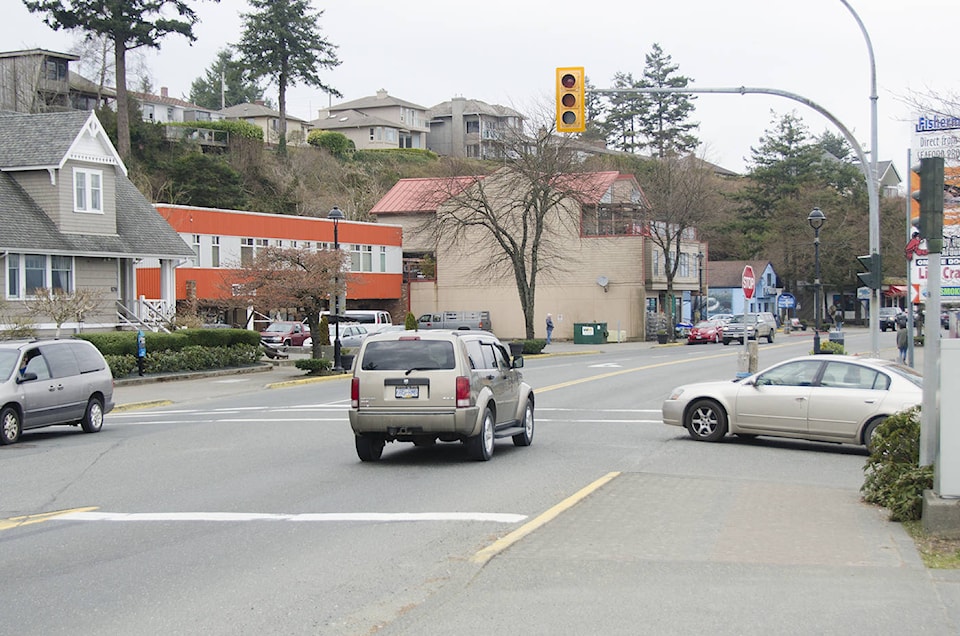The report has come back outlining options for the entrance to the Maritime Heritage Centre and Discovery Pier redesign, and council has decided it will become a roundabout.
The city commissioned Highland Engineering Service Ltd. for the study (PDF), which presented two options for the area: a fully signalled intersection and a roundabout. With between 10,000 and 15,000 vehicles per day traveling through that area of town, something needed to be done about that intersection so it could function properly, and these were determined to be the two best options.
Both designs needed to be able to accomodate vehicles as large as articulated semi trucks and Campbell River Fire’s ladder truck, maintain access to the Fisherman’s Wharf loading dock and avoid having to relocate the BC Hydro switch kiosks at the intersection.
The signaled intersection option provided better access for delivery vehicles like semi trucks due to its 8m driveway entrance, but did not address the current problem of sightlines south of the entrance for vehicles exiting the MHC property, which currently requires them to pull into the sidewalk to see the northbound traffic and determine whether it is safe to exit. This option would also result in a net loss of parking spots in the area, an issue which council has already determined needs to be improved. The roundabout option provides a more sfficient traffic calming device, the report says, which addresses on of council’s Refresh Downtown goals, as well as increasing cyclist and pedestrian safety. It also, however, restricts the exit width, providing insufficient room for vehicles to pass a stalled vehicle at the entrance/exit to the north and south leg of the roundabout.
Both features increase the downhill slope approaching from the south, creating a grade of 7.6 per cent, which is above the recommended six per cent grade for a deceleration zone into an intersection, but there are further traffic calming measures that can be implemented uphill from the intersection to increase safety, such as “curb bulbouts” as a physical signal that a change in traffic patterns lies ahead, as well as transitioning to the area to a 30km/hr “local” style of road.
Council’s decision to go with the roundabout option is subject to another traffic study being done in the area to confirm the numbers and speeds of vehicles, as the report was formulated based on numbers from a traffic radar count performed in 2014. Because the design concept extrapolates data gathered in that study, a current study is required to confirm those estimates are realistic.
